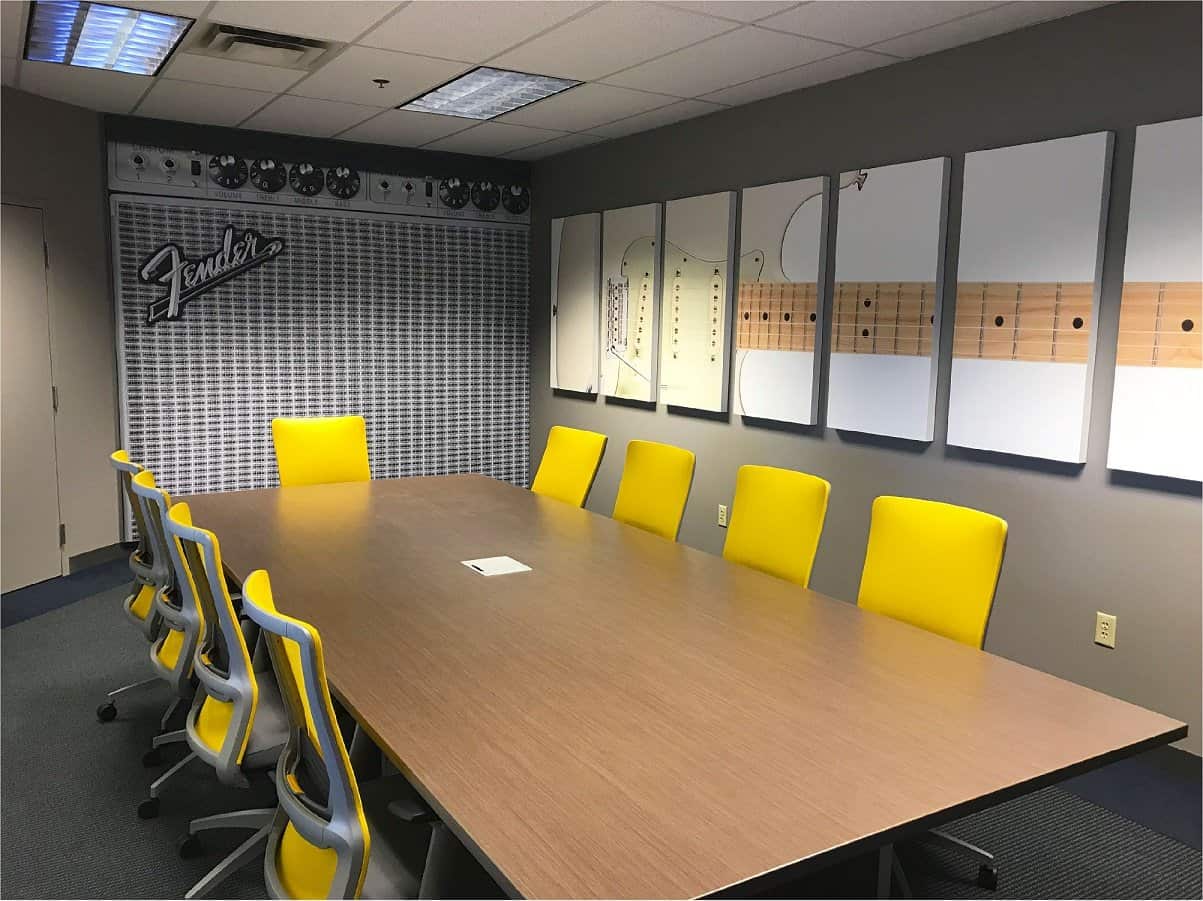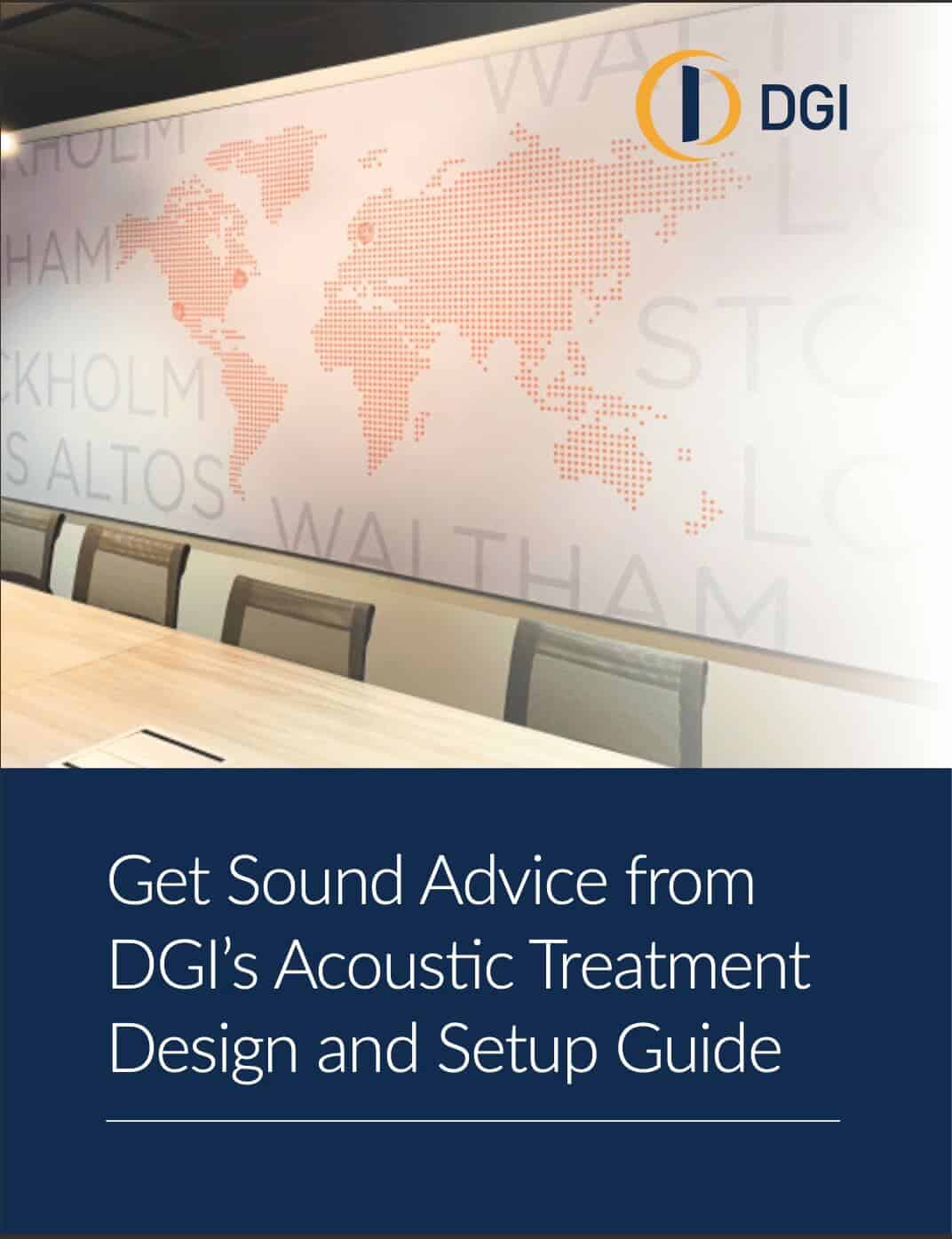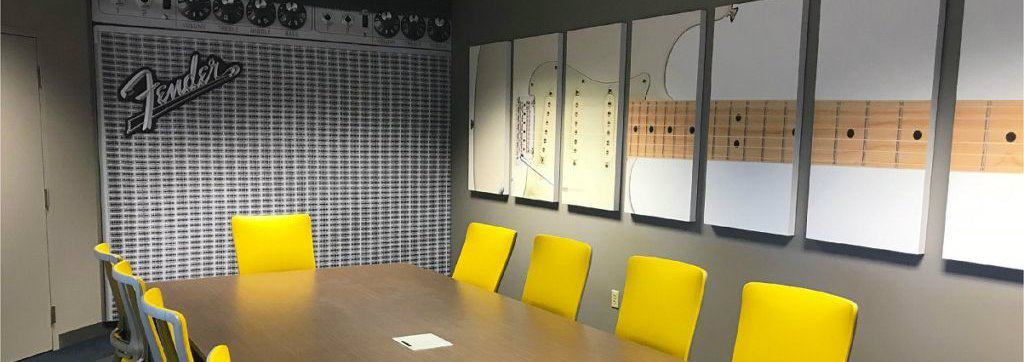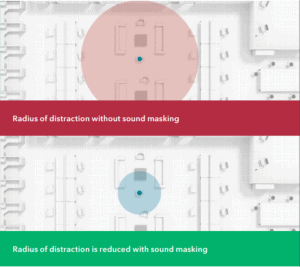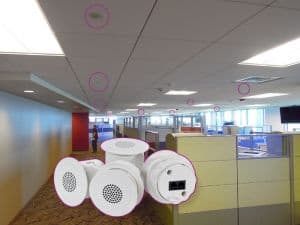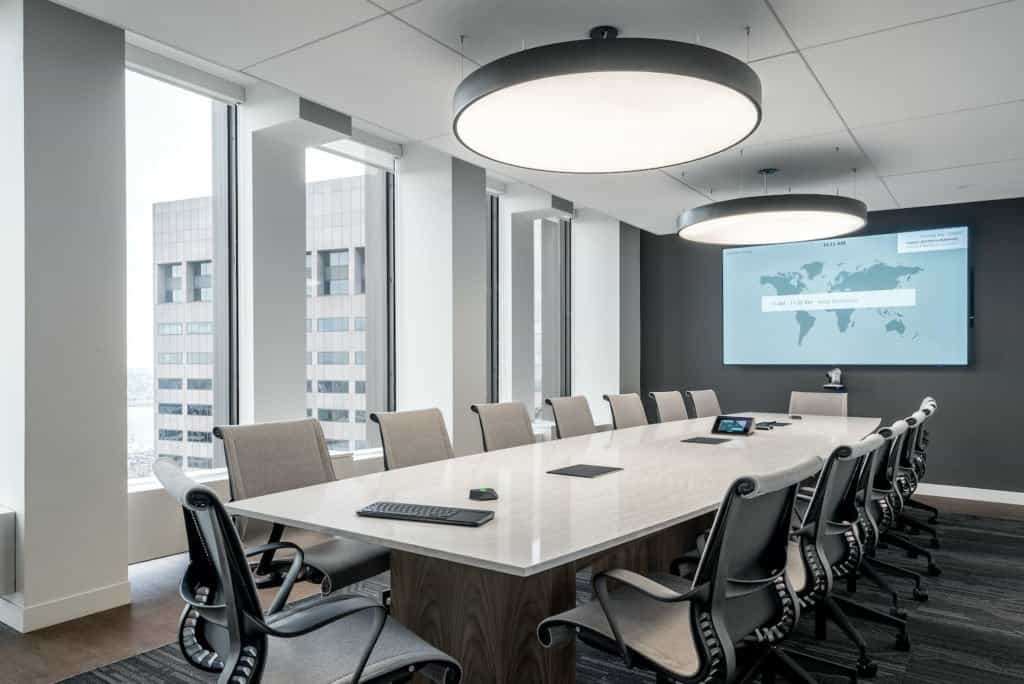Your Complete Office Soundproofing Guide — Including Tips & Examples!
In addition to being just plain annoying, office sounds that you have no control over are distracting, stressful and detrimental to productivity. Noise pollution is especially common in open office floor plans, and one-third of workers believe distractions and noise from this type of open floor plan work environment makes it harder to do their jobs effectively.
Dips in productivity mean wasted time and resources, which costs businesses millions of dollars each year. Because of the interruption sound can cause, companies are exploring office soundproofing techniques to get their workplace back on track.
4 Ways Noise Pollution is Affecting Your Office
Sound Absorption
Sound Masking
Office Soundproofing Tips
What Type of Solution Is Right For You?
>> Get the complete guide to office audio visual technology here!
4 Ways Noise Pollution is Affecting Your Office
Noise is everywhere in an office. Computers, printers, typing, phones, conversations and moving chairs are only just some examples of background noise that can really take someone’s attention away from their responsibilities.
Open concept floor plans don’t have the benefit of barriers or walls that help block some of this noise, which means sound waves are free to travel throughout the entire office. This creates several problems, including:
- Wasted time (and money!): Excessive talking or distracting noises affects concentration, no matter the task at hand. On average, employees waste about 21 minutes a day due to conversational distractions. Now, multiply those minutes by the number of employees you have. Yikes.
- Uncomfortable workspaces: A noisy environment isn’t welcoming. If you have visitors come to your office, such as interviewees, potential or current clients, you want them to feel like they are in a professional environment, not a playground.
- Limited privacy: If you’re having confidential or personal conversations with other workers, you probably want a high level of privacy. Bad acoustics can be just as harmful as a nosey eavesdropper in this case, meaning your private conversation can quickly become public.
- Unprofessional background noise: When calling prospective or current clients, background noise can sound awful for the person on the other end of the phone. Plus, the excessive sounds can distract from your message and can confuse your conversation.
Fortunately, these are problems that can all be solved with the right office soundproofing technique. The two we’re focusing on are sound absorption and sound masking.
Before we get into the details of these methods, just remember that the right technique will depend on your unique environment.
Sound Absorption
Ideal for: Conference rooms, offices, concert halls and dining areas. Sound absorption is most common in large spaces that produce echoes.
How it Works: Just like a sponge soaks up water, sound absorption takes in noise. The process works by utilizing absorbing materials and acoustic panels.
Acoustic panels take in as much sound energy as possible so that it doesn’t bounce off the walls. Part of the energy is transformed into heat while the rest is transmitted through the absorbing material. Much like a painting, panels can be easily mounted on a wall. Think of them as a functional piece of art. They can be made in any shape or size and designed any way you choose.
Add your company logo, a relaxing design or go with a theme like we did with our Fender conference room!
Sound Masking
How it Works: Masking covers excess noise by actually adding sound. You’re probably thinking, “Why would I add sound to an already noisy area?”
The added sound creates a low level of engineered background noise. Sound masking raises the sound floor so that the average noise level rises and you can’t hear the people next to you. This makes an area feel quieter because it adds to the intelligibility of speech. In other words, when you can’t understand what people around you are saying, it’s harder to become distracted by their conversations.
Sound masking emits ambient noise through small speakers that are seamlessly installed along a simple grid pattern. The noise is engineered to match the frequency of human speech, making it a cost-efficient way to reduce noise distractions.
Office Soundproofing Tips
When researching office soundproofing methods, don’t forget to:
- Assess your office layout
If you’re renovating your current space or moving to a completely new one, take into account the current layout. Are certain employees always on the phone? Maybe they should be separated from others. Remember that open office concepts, glass walls and limited barriers will allow sound to travel. - Consider the NRC
The noise reduction coefficient (NRC) measures the amount of sound energy that is absorbed when it reaches a surface. The NRC is a rating between 0 and 1, with a rating of .90 meaning that 90% of the sound in a particular space is absorbed and 10% is reflected. Basically, the higher the NRC, the better the material is at absorbing sound. Materials that can absorb 50-90% of sound are considered most efficient. - Remember your technology
Phone systems, televisions, video conferencing and beyond: These only add to noise pollution. Make sure each system is in an appropriate place. In other words, don’t set up a television with surround sound on a wall that is shared by people who are constantly on the phone.
What Type of Solution is Right for You?
There are many factors to consider as you explore office soundproofing options, such as your overall goals and needs, budget and required materials. Here are some questions to think about:
- Do you have room for acoustic panels?
- Does your office already have walls and barriers?
- Are you looking to reduce noise pollution in just one space — or throughout the entire office area?
If you’re looking to minimize noise in conference rooms, offices and other large spaces that produce echoes, sound absorption is an ideal choice. Sound masking is best for open floor plans, but if you aren’t sure which solution is best for you, we’d be happy to help.
The best tip we can offer as you research office soundproofing is this: Go with the experts! Acoustics are a specialized field and sound management experience is essential for increasing the comfort of your office and the productivity of your employees.
Contact DGI for all of your sound absorption and sound masking needs! We specialize in sound management as well as acoustic art panels. Interested in upgrading your office’s audiovisual technology? Get our complete guide to office audio visual technology here!
